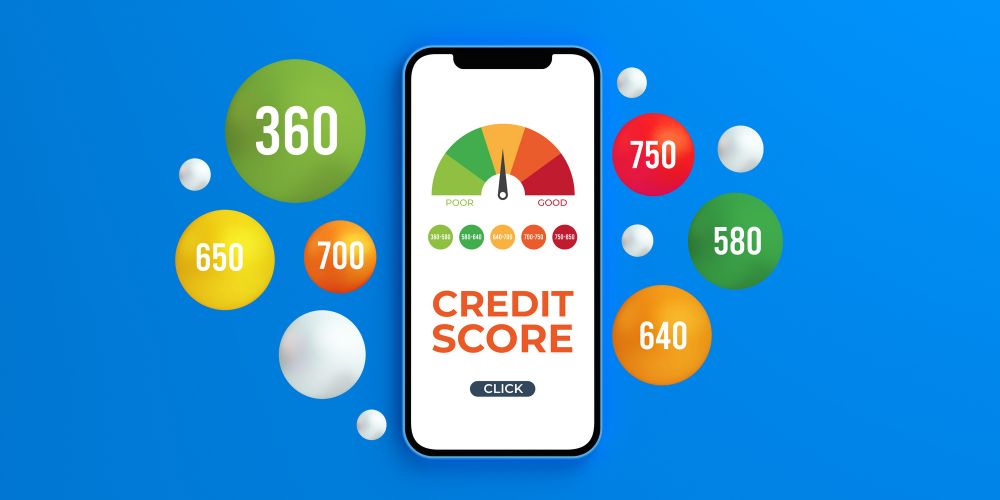Business loans play a crucial role in helping businesses thrive and grow. Whether it’s funding a startup, expanding operations, purchasing equipment, or managing day-to-day expenses, business loans provide the necessary capital to achieve these goals. Understanding how business loans work and exploring real-world examples can shed light on their practical applications in various scenarios.
To begin, an introduction to business loans outlines their purpose and importance in the corporate landscape. Different types of business loans are available to cater to specific needs. These include term loans, SBA loans, equipment financing, business lines of credit, and invoice financing. Each type has its own features and benefits, making them suitable for different situations.
Real-world examples of business loans illustrate how they are utilized in practice. Startup funding, for instance, is often sought by entrepreneurs to launch their ventures and cover initial expenses. Expansion and growth loans support businesses aiming to enter new markets or increase their capacity. Equipment purchase loans enable companies to acquire necessary machinery or technology. Working capital loans provide the funds needed to manage day-to-day operations and bridge gaps in cash flow.

Understanding how business loans work is essential for applicants. The application process involves gathering necessary documentation and submitting a comprehensive application. Approval and loan terms are determined based on factors like creditworthiness, business financials, and collateral requirements. Repayment terms are established, outlining how the loan will be paid back over a specified period.
Several factors must be considered when applying for a business loan. Interest rates and fees directly impact the total cost of borrowing. Loan amount and repayment terms should align with the business’s financial capabilities. Collateral requirements may be necessary for specific loan types. Finally, creditworthiness, including the business’s credit score and financial history, is an important factor influencing loan approval and terms.
By exploring real-world examples and understanding how business loans work, entrepreneurs and business owners can make informed decisions when seeking financial assistance. Whether it’s funding a new endeavor or navigating growth opportunities, business loans provide the essential capital to support business success.
Key takeaway:
- Business loans provide financing for various needs: Whether it’s startup funding, expansion, equipment purchase, or working capital, there are different types of business loans available to meet specific financial requirements.
- Understanding the loan process and terms is crucial: The application process, approval, loan terms, and repayment methods should be carefully considered and understood before obtaining a business loan.
- Factors such as interest rates, collateral, and creditworthiness impact loan options: When applying for a business loan, it’s important to consider factors like interest rates, fees, loan amount, repayment terms, collateral requirements, and creditworthiness to select the most suitable loan option.
Types of Business Loans
Discover the diverse landscape of business loans, offering opportunities for growth and financial support. Delve into different types, including term loans, SBA loans, equipment financing, business lines of credit, and invoice financing. Uncover the power of each option, explore their unique features and benefits, and embrace the endless possibilities they bring to entrepreneurs and businesses alike. Get ready to dive into the world of business loans and unlock the potential for your own success.
Term Loans
Term loans are a popular type of business loan that provide a lump sum of money to a business, which is repaid over a specific period of time, typically with interest. These term loans are often used for specific purposes such as equipment purchases, expansion, or working capital needs. The loan amount for term loans can range from a few thousand dollars to millions, depending on the business’s needs and creditworthiness.
Interest rates for term loans can vary based on factors such as the creditworthiness of the business and the length of the loan term. The repayment terms for term loans can range from a few months to several years, with regular monthly or quarterly payments. Collateral requirements may be necessary for term loans, depending on the lender’s policies and the creditworthiness of the business.
Businesses applying for term loans should carefully consider their ability to meet the repayment terms and the impact that regular loan payments will have on their cash flow. It’s important to shop around and compare terms and rates from different lenders to find the best term loan option for your business. Some real-world examples of businesses that use term loans include startups looking for initial funding, established businesses seeking to expand their operations, and companies looking to purchase new equipment.

Understanding the terms and conditions of a term loan and ensuring that it aligns with your business’s financial goals and needs is crucial before making a decision. Therefore, term loans are a viable option for businesses seeking financial assistance.
SBA Loans
SBA Loans are government-backed loans designed to assist small businesses in obtaining funding for various purposes.
One of the key benefits of SBA loans is that they come with a guarantee from the Small Business Administration, which reduces the risk for lenders and increases the chances of loan approval.
SBA loans typically offer lower interest rates compared to other types of business loans, making them more affordable for small businesses.
SBA loans often provide longer repayment terms, which can help ease the financial burden on small businesses by spreading out the payments over a longer period.
The SBA offers multiple loan programs to cater to different business needs, such as general small business loans, microloans, and 504 loans for real estate and equipment financing.
SBA loans can be used for a range of business purposes, including working capital, equipment purchases, real estate acquisitions, and refinancing existing debt.
SBA loans are particularly beneficial for startups and small businesses that may have difficulty accessing traditional financing options due to limited credit history or collateral.
While SBA loans generally require collateral, the SBA may offer flexibility in the collateral requirements, allowing businesses to use assets such as real estate, equipment, or inventory as security.
Equipment Financing
is a method of obtaining funding to purchase equipment for your business. In this type of financing, the equipment itself typically serves as collateral for the loan. This means that if you are unable to repay the loan, the lender has the right to repossess the equipment.
One advantage of equipment financing is that it allows businesses to acquire the equipment they need without having to pay the full purchase price upfront. Instead, they can make regular payments over a specified period of time. The loan terms for equipment financing can vary, but they often range from three to seven years.
Interest rates for equipment financing can also vary depending on factors such as your creditworthiness and the length of the loan. It is important to carefully consider the interest rate and repayment terms before choosing a lender. Additionally, some lenders may require a down payment or additional collateral to secure the loan.
Equipment financing is especially beneficial for businesses that rely heavily on expensive equipment, such as construction companies or manufacturing firms. By utilizing equipment financing, businesses can preserve their cash flow and allocate funds to other areas of their operations.

Business Lines of Credit
When considering business lines of credit, it’s important to understand the different types available. One option is business lines of credit, which provide a set amount of money that a business can borrow from as needed. Here are some key points to consider about business lines of credit:
- Flexibility: A business line of credit allows you to access funds when you need them, giving you the flexibility to manage cash flow fluctuations and unexpected expenses.
- Revolving credit: Unlike a term loan which is a one-time lump sum, a business line of credit is a revolving form of credit. As you repay the borrowed amount, it becomes available to borrow again.
- Interest rates: Business lines of credit often have variable interest rates, which means the rate can fluctuate based on market conditions. It’s important to carefully review the terms and understand how interest accrues.
- Credit limit: The credit limit for a business line of credit is determined based on factors such as the business’s creditworthiness, financial history, and revenue. It’s important to apply for a credit limit that aligns with your business’s anticipated borrowing needs.
A true history of business lines of credit is their ability to provide businesses with the financial flexibility needed to manage their operations. Many small businesses have utilized lines of credit to bridge gaps in cash flow, purchase inventory, cover payroll, or invest in growth opportunities. Business lines of credit have proved to be a valuable financial tool for businesses of all sizes, offering a reliable source of funding that can be accessed whenever the need arises.
Invoice Financing
Invoice financing, also known as invoice factoring, is a valuable financial tool that allows companies to use their unpaid invoices as collateral to obtain immediate cash flow. This type of business loan provides quick access to cash, typically within 24 hours, by offering a percentage of the invoice value upfront. By utilizing invoice financing, businesses can cover expenses, invest in opportunities, and fund their operations or growth while waiting for customers to make payments.
One of the major advantages of invoice financing is that it does not create additional debt on a company’s balance sheet. Unlike traditional loans, invoice financing unlocks the value of outstanding invoices without incurring any debt. This provides businesses with flexible funding options, as they can choose to finance all their invoices or only select ones based on their specific needs.
Another benefit of invoice financing is the improvement in cash flow management. By accelerating cash flow, businesses can meet their financial obligations, pay suppliers on time, and take advantage of early payment discounts. This financial solution also helps mitigate credit risk by transferring some of the risk associated with late or non-payment to the financing provider.
An illustrative example of the advantages of invoice financing can be seen in a manufacturing company that supplies products to a retail chain. Due to the long payment cycle of 60 days, the manufacturer faces cash flow challenges. However, by utilizing invoice financing, the manufacturer can access a portion of the invoice value immediately. This enables them to purchase raw materials, pay employees, and cover other business expenses, ensuring smooth operations and continued growth while waiting for payment from their customers.

Real-World Examples of Business Loans
Looking for real-world examples of business loans that actually work? Look no further! In this section, we’ll dive into various scenarios where business loans have made a significant impact. From startup funding to equipment purchases and working capital, get ready to explore how these loans have fueled business growth and success. Buckle up and get inspired by these captivating stories of entrepreneurial triumphs!
Startup Funding
When starting a new business, one crucial factor to consider is startup funding. It is the financial capital needed to launch and develop a startup company. Obtaining funding for a startup can be quite challenging, as investors typically seek potential growth, innovation, and a clear business plan.
There are several sources of startup funding available:
- Personal savings: Many entrepreneurs utilize their own savings to fund their startup, which eliminates the need for external investors.
- Friends and family: Some startups secure funding from friends and family members who believe in their venture.
- Angel investors: Angel investors are individuals who provide capital to startups in exchange for convertible debt or equity ownership. They often possess industry experience and can offer guidance and connections.
- Venture capitalists: Venture capitalists are professional investors who offer larger amounts of funding to startups in exchange for equity. Their focus is usually on high-growth companies with high potential returns.
- Crowdfunding: Crowdfunding platforms enable startups to raise small amounts of money from a large number of individuals who believe in their idea.
Here’s an interesting fact: According to a study, startups that receive funding from venture capitalists have a higher likelihood of success compared to those funded through personal savings or friends and family.
Expansion and Growth
Expansion and growth can be achieved through Real-World Examples of Business Loans and How They Work, which are a valuable tool.
To open new locations, hire more employees, or invest in additional inventory or equipment, acquiring a business loan is necessary.
Business loans can help businesses increase their customer base, revenue, and overall market share, contributing to expansion and growth.

By receiving financial support through a business loan, businesses can capitalize on emerging trends and take advantage of new opportunities, facilitating expansion and growth.
Prior to applying for a business loan for expansion and growth, it is essential to carefully consider the potential return on investment.
Here’s an interesting fact: According to the Small Business Administration, small businesses that receive loans are more likely to experience higher sales and job growth compared to those that do not receive loans.
Equipment Purchase
When considering an equipment purchase for your business, there are several key factors to keep in mind:
1. Identify your specific equipment needs: Determine what type of equipment you require for your business operations. Consider factors such as size, capacity, and functionality.
2. Research the market: Look for reputable suppliers or manufacturers that offer the equipment you need at competitive prices. Check customer reviews and ratings to ensure quality and reliability.
3. Compare prices and financing options: Obtain quotes from multiple suppliers and compare prices to get the best deal. Additionally, explore different financing options such as equipment financing or lease-to-own programs.
4. Evaluate the equipment quality: Assess the durability and performance of the equipment before making a purchase. Look for warranties or guarantees that provide peace of mind.
5. Consider maintenance and operational costs: Factor in the ongoing costs associated with maintaining and operating the equipment. This includes expenses for repairs, maintenance, and energy consumption.
6. Schedule delivery and installation: Coordinate with the supplier to schedule the delivery and installation of the equipment. Ensure that any necessary permits or requirements are met.
7. Train employees: If the equipment requires specialized knowledge or skills to operate, plan for employee training to maximize its usage and avoid accidents or damage.
8. Monitor equipment performance: Regularly monitor the performance of the equipment to identify any issues early on and take necessary corrective actions. This will help prolong its lifespan and optimize its utilization.
9. Consider future needs: Anticipate future growth and potential changes in your business that may require additional or upgraded equipment. Opt for equipment that can be easily expanded or adapted to accommodate future needs.

Working Capital
Working capital is a vital aspect of every business, ensuring its day-to-day operations run smoothly. It refers to the funds available for covering short-term expenses like payroll, inventory, and utility bills. Proper management of working capital is essential for business growth and stability.
To maintain sufficient working capital, businesses should focus on optimizing cash flow, reducing unnecessary expenses, and effectively managing inventory levels. It is crucial to have a clear understanding of the company’s financial position and projections to determine the amount of working capital required.
One real-world example of the significance of working capital is the story of a small retail store. They experienced a sudden surge in sales during the holiday season but struggled to meet the increased demand due to insufficient working capital. As a result, they faced stock shortages and delayed customer orders, leading to a loss of potential revenue and unhappy customers. However, by securing a working capital loan, they were able to restock inventory, fulfill customer orders promptly, and capitalize on the peak sales season.
How Do Business Loans Work?
Business loans are a lifeline for many entrepreneurs looking to turn their ideas into reality. In this section, we’ll demystify the process of how business loans work and break it down into three key sub-sections. First, we’ll explore the application process, offering insights into the necessary documentation and requirements. Next, we’ll delve into the crucial steps involved in the approval and loan terms, ensuring you have a clear understanding of the financial implications. Lastly, we’ll shed light on the loan repayment process, providing strategies to manage and fulfill your financial obligations. Get ready to navigate the world of business loans with confidence!
Application Process
The application process for a business loan involves several steps:
- Gather necessary documents and information: To initiate the application process for a business loan, it is essential to collect a range of documents. These include financial statements, tax returns, business plans, and bank statements. Ensure that all paperwork is up to date.
- Research and choose a lender: It is important to conduct thorough research on different lenders and their loan options to find the most suitable one for your business. Consider factors such as interest rates, repayment terms, and loan amounts.
- Complete the loan application: Fill out the loan application form provided by the lender, ensuring that all the information is accurate and comprehensive.
- Submit supporting documents: In addition to the application, you must submit the necessary supporting documents specified by the lender. This may include financial statements, business licenses, and personal identification documents.
- Wait for approval: Once the application and supporting documents have been submitted, the lender will undertake a review process and make a decision. Please note that this process may require some patience.
- Review and accept loan terms: If your application is approved, carefully review the terms and conditions of the loan, paying close attention to factors like interest rates, repayment schedules, and any associated fees.
- Sign the loan agreement: Once you have thoroughly reviewed and accepted the loan terms, proceed to sign the loan agreement provided by the lender. This step legally binds you to the terms of the loan.
- Receive funds: Following the signing of the loan agreement, the lender will disburse the funds to your business bank account. It is crucial to use the funds responsibly and in alignment with the intended purpose.
- Repay the loan: As stipulated in the loan agreement, ensure timely repayments of the loan amount, including any interest and fees. Failure to fulfill this obligation can have detrimental consequences for your business.

Approval and Loan Terms
When applying for a business loan, it is crucial to consider both approval and loan terms. These factors play a significant role in the decision-making process. Here are some key details to keep in mind:
- Eligibility assessment: To determine if you qualify for a loan, lenders assess your creditworthiness and financial stability. They evaluate factors such as your credit score, business revenue, and cash flow. Meeting the eligibility criteria is essential for loan approval.
- Loan amount: The approved loan amount depends on various aspects, including your business’s financial health, the purpose of the loan, and the lender’s policies. It is important to calculate the exact amount required to fulfill your business goals.
- Interest rates: The interest rates have a significant impact on the total cost of the loan. Lenders may offer fixed or variable interest rates. It is advisable to compare rates offered by different lenders and choose the most competitive option. Opting for a lower interest rate can save a considerable amount of money for your business.
- Loan term: The loan term refers to the duration over which you will repay the loan. It can range from a few months to several years, depending on the loan type and the lender’s terms. Before selecting a loan term, consider your business’s cash flow and ability to make regular payments.
- Repayment schedule: The repayment schedule specifies the frequency and amount of loan repayments. It may include monthly, quarterly, or annual payments. Review the repayment schedule carefully to ensure it aligns with your business’s cash flow and revenue cycle.
- Additional fees and charges: Besides interest rates, lenders may impose additional fees like origination fees, processing fees, or prepayment penalties. When assessing the overall affordability of the loan, take these costs into account.
- Collateral requirements: Some loans may necessitate collateral, which is an asset provided as security for the loan. Collateral can consist of real estate, equipment, or inventory. Understand the collateral requirements and assess whether you possess suitable assets for pledging.
By considering these factors, you can navigate the approval and loan terms process more effectively, enabling you to make an informed decision regarding your business’s financial needs.
Loan Repayment
Loan repayment is a crucial aspect of obtaining a business loan. Once the loan is approved, the borrower is responsible for repaying the borrowed amount, along with any additional interest and fees incurred. Repayment terms are typically outlined in the loan agreement and can vary depending on the type of loan and the lender’s policies.
It is important for borrowers to carefully consider the repayment terms before committing to a business loan. Factors to consider include the interest rates and fees associated with the loan, the loan amount, and the duration of the repayment period.
Interest rates and fees can significantly impact the total repayment amount, so it’s vital to understand these terms upfront. Loan amounts should be assessed based on the borrower’s specific needs, taking into account both short-term cash flow needs and long-term financial goals.
The repayment period will determine the duration of the borrower’s financial commitment. Shorter repayment periods may result in higher monthly payments but can help save on overall interest costs. On the other hand, longer repayment periods may provide more flexibility with monthly payments but can result in higher interest charges over time.
It is essential to manage loan repayment diligently to avoid any late or missed payments, as this can negatively impact creditworthiness and may result in additional penalties or fees. By understanding the terms and conditions of loan repayment, borrowers can effectively plan and fulfill their financial obligations while maintaining a healthy cash flow for their business.
Factors to Consider when Applying for a Business Loan

When it comes to applying for a business loan, there are several vital factors to consider. Let’s dive into the nitty-gritty details and explore the key aspects that can impact your decision. From interest rates and fees to loan amounts and repayment terms, collateral requirements, and creditworthiness, we’ll uncover the critical elements you need to examine before taking the plunge into the world of business loans. Are you ready to make informed choices and set your venture up for success? Let’s get started!
Interest Rates and Fees
When considering a business loan, it is important to evaluate the interest rates and fees associated with the loan. These factors can significantly impact the cost of borrowing and affect the overall financial health of your business. Here is a table summarizing the key considerations:
| Interest Rates | Fees |
| The interest rate is the percentage charged on the outstanding loan amount. Lower interest rates result in lower monthly payments and overall borrowing costs. It is crucial to compare interest rates from different lenders to find the most competitive option. | Fees are additional charges that lenders may impose for loan origination, processing, or administration. These fees can vary significantly between lenders, so it is essential to review and understand the fee structure before committing to a loan. |
When assessing interest rates and fees:
- Compare interest rates from multiple lenders to secure the most favorable rate.
- Consider the impact of fees on the total cost of the loan.
- Understand the specific fees associated with the loan, such as origination fees, application fees, or prepayment penalties.
- Take into account the repayment period when evaluating the interest rates and fees, as longer loan terms may result in higher overall costs.
By carefully considering the interest rates and fees associated with a business loan, you can make an informed decision that aligns with your financial goals and ensures the sustainability of your business.
Loan Amount and Repayment Terms
A business loan amount can vary from $10,000 to several million dollars, depending on the lender and the borrower’s needs. The repayment terms for a business loan can vary depending on the loan type and the lender. They can range from 1 year to 25 years, with some shorter-term loans requiring weekly or monthly payments, while others have longer terms with monthly or quarterly payments.
The loan amount will be determined by factors such as the borrower’s creditworthiness, the purpose of the loan, the borrower’s financial history, and the lender’s policies.
The repayment terms will be specified in the loan agreement and may include interest rates, fees, and any additional charges. The borrower is responsible for making regular payments, including principal and interest, until the loan is fully repaid.
The loan amount is critical as it should cover the borrower’s financing needs without being excessive, to avoid unnecessary interest expenses and ensure the borrower’s ability to repay the loan.
The repayment terms are crucial as they determine the duration and frequency of the payments, which should be manageable for the borrower based on their cash flow and business operations.
Collateral Requirements
When applying for a business loan, one crucial factor to consider is the collateral requirements. Collateral refers to assets or property that the borrower pledges as security for the loan. In the event that the borrower defaults on the loan, the lender can seize and sell the collateral to recover their losses.
| Collateral Type | Description |
| Real Estate | A commercial property or personal property, such as a house, land, or building, can serve as collateral. |
| Equipment | Business equipment, machinery, vehicles, or any valuable equipment owned by the borrower can be used as collateral. |
| Inventory | The value of the inventory owned by the business can be used as collateral, especially in industries where inventory is a significant asset. |
| Accounts Receivable | Outstanding invoices or payments due to the business can be pledged as collateral. This is known as invoice financing. |
Collateral requirements vary depending on the lender and the loan amount. The value of the collateral should be sufficient to cover the loan, providing the lender with assurance that they can recover the funds if the borrower defaults. Lenders may also consider the type and condition of the collateral, as well as its market value. Additionally, borrowers may need to provide documentation such as property deeds, titles, or valuation reports for the collateral.
Considering the collateral requirements is essential when applying for a business loan. It is important to evaluate the value and availability of suitable collateral before approaching lenders to ensure a higher likelihood of loan approval.
Remember, collateral requirements differ among lenders, so it’s crucial to carefully review these requirements for the specific loan you are applying for.

Creditworthiness
Creditworthiness is a critical factor to consider when applying for a business loan. Lenders evaluate creditworthiness to determine the borrower’s ability to repay the loan based on their past financial behavior. A robust creditworthiness increases the likelihood of loan approval and enables the borrower to secure more favorable loan terms, such as lower interest rates and longer repayment periods.
To assess creditworthiness, lenders examine various aspects of your financial history, including your credit score, payment history, debt-to-income ratio, and business financial statements. Having a good credit score, along with a consistent track record of making timely payments and maintaining manageable debt levels, demonstrates the borrower’s reliability and responsibility in repaying loans.
Maintaining a strong creditworthiness is crucial for businesses to access funding when needed. It is advisable to regularly monitor your credit score, make on-time bill payments, minimize debts, and promptly address any errors or discrepancies on your credit report.
Pro-tip: To enhance your creditworthiness, establish a positive credit history by using credit responsibly, maintaining low balances, and promptly paying off debts. Regularly reviewing your credit report and promptly resolving any issues will help maintain a favorable creditworthiness and increase your chances of securing business loans in the future.
Some Facts About Real-World Examples of Business Loans and How They Work:
- ✅ Business loans have been used by major companies like Starbucks, Google, Subway, and Under Armour to finance their operations and expand. (Source: smbcompass.com)
- ✅ The founders of Starbucks took out loans to fund their initial coffee beans business and later expanded to selling tea and coffee cups. (Source: smbcompass.com)
- ✅ Google founders received funding from Andy Bechtolsheim to develop their search engine, which eventually became one of the most prominent tech companies. (Source: smbcompass.com)
- ✅ Subway founder started with a small loan to open a restaurant and went on to create a global chain with thousands of locations. (Source: smbcompass.com)
- ✅ Under Armour founder initially accumulated credit card debt to start his sports apparel business, which later gained significant value and recognition. (Source: smbcompass.com)
Frequently Asked Questions
1. How can business loans help companies expand their operations or production?
Business loans provide companies with the necessary funds to expand their operations or increase production. By procuring external financing, companies can invest in new equipment, hire additional staff, open new locations, or develop new products and services.
2. What are the qualification requirements for obtaining a business loan?
Qualification requirements for business loans may vary depending on the lender and loan type. Generally, lenders consider factors such as the company’s creditworthiness, revenue, business plan, personal credit score of the business owner, and collateral (if any). Meeting these requirements demonstrates the company’s ability to repay the loan.
3. How can small businesses benefit from debt relief services?
Small businesses burdened with credit card debt can benefit from debt relief services, such as those offered by Freedom Debt Relief. These services provide consultations, offer help to negotiate with creditors to reduce the amount owed, and provide tailored repayment plans to ease the financial burden and improve cash flow for the business.
4. What is the significance of minimum balance fees in business loans?
Minimum balance fees are charges imposed by financial institutions if a business fails to maintain a certain minimum balance in their accounts. These fees are important for businesses to consider while managing their cash flow and to avoid unnecessary charges that can affect their profitability.
5. How can FreshBooks accounting software assist businesses in managing their finances?
FreshBooks accounting software offers various features to help businesses manage their finances effectively. It allows easy uploading of receipts, creation of invoices, and tracking of expenses. By streamlining financial processes, businesses can improve their financial management and ensure accurate record-keeping.
6. What are the options for short-term business funding?
Short-term loans, as one option, provide quick access to cash for businesses in need. Online lenders offer short-term loans with quick approval processes, while credit unions and traditional banks also provide this type of financing. These loans are designed to help businesses cover immediate expenses, bridge cash flow gaps, or seize short-term opportunities.


